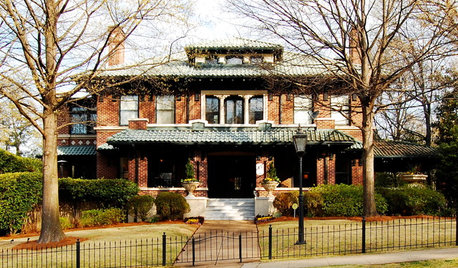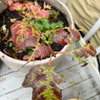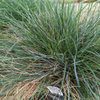White stuff on leaves..pics included..
malorn
17 years ago
Related Stories

HOME OFFICESRoom of the Day: Stately Study Includes a Cozy Family Space
A new fireplace, windows, millwork and furniture make this room hard to leave
Full Story
LAUNDRY ROOMSRoom of the Day: The Laundry Room No One Wants to Leave
The Hardworking Home: Ocean views, vaulted ceilings and extensive counter and storage space make this hub a joy to work in
Full Story
ARCHITECTUREStates of Style: Alabama’s Icons Leave Their Mark
In the first of a new series, discover the natural beauty, the architectural icons and some of our favorite homes deep in the heart of Dixie
Full Story
DECORATING GUIDES7 Reasons to Include a Little Gloss in Your Decor
High-shine finishes look good, are practical and can infuse your home with an air of glamour
Full Story
DECLUTTERINGDownsizing Help: Choosing What Furniture to Leave Behind
What to take, what to buy, how to make your favorite furniture fit ... get some answers from a homeowner who scaled way down
Full Story
FALL GARDENING5 Ways to Put Fall Leaves to Work in Your Garden
Improve your soil and yard the organic way with a valuable garden booster that grows on trees
Full Story
MOST POPULAR5 Ways to Pare Down Your Stuff — Before It Gets in the Door
Want to free up some room around the house? Rethink gift giving, give yourself a shopping mantra and just say, ‘No, thank you’ to freebies
Full Story
MOST POPULARMust-Try Color Combo: White With Warm Off-White
Avoid going too traditional and too clean by introducing an off-white palette that brings a touch of warmth and elegance
Full Story
ORGANIZINGHow Much Stuff Is Enough?
Play the numbers game to streamline your belongings, for a neater home and a less-stressed you
Full Story
ORGANIZING21 Tips for Organizing Your Stuff
Restore order at home with these ideas for tidying up cupboards, shelves, doors and more
Full StoryMore Discussions









cramapple
malornOriginal Author
Related Professionals
Bellflower Landscape Architects & Landscape Designers · Fillmore Landscape Architects & Landscape Designers · Lakewood Landscape Architects & Landscape Designers · Berwyn Landscape Contractors · Brandon Landscape Contractors · Burlington Landscape Contractors · Crystal Landscape Contractors · Fuquay-Varina Landscape Contractors · Hollywood Landscape Contractors · Mason Landscape Contractors · River Ridge Landscape Contractors · Riverhead Landscape Contractors · Shirley Landscape Contractors · Streamwood Landscape Contractors · Sugar Hill Landscape Contractorscramapple
rhizo_1 (North AL) zone 7
cramapple
cramapple
malornOriginal Author
tinamcg
jean001
cramapple
rhizo_1 (North AL) zone 7